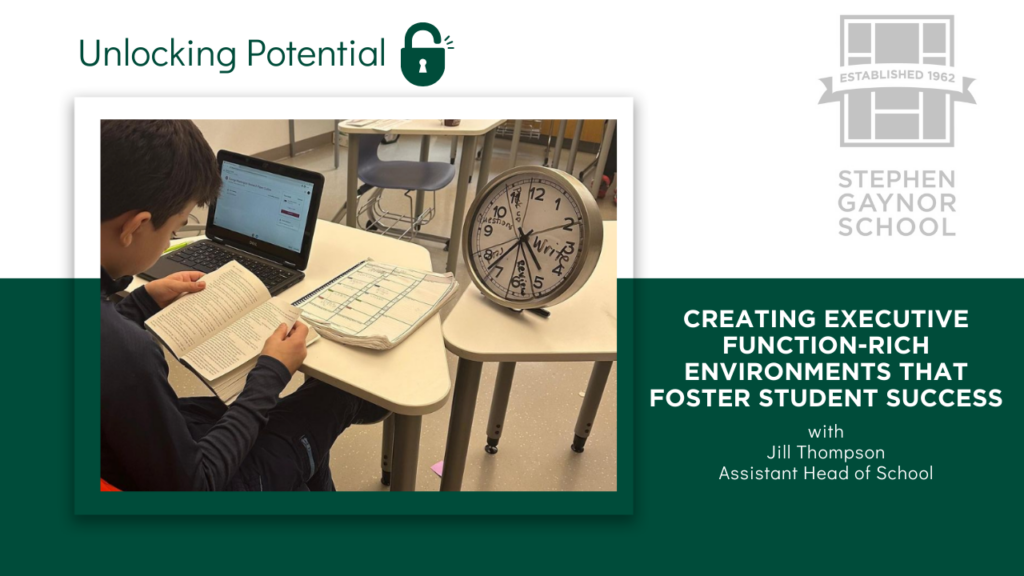
by Jill Thompson, Assistant Head of School
Underdeveloped executive functions can present differently across the academic environment. It’s the student who frequently forgets steps in assignments. Or the student who disrupts the class to ask what materials are needed or where they can be found. It’s the student who may have difficulty remembering important information. Or the student who is easily dysregulated throughout the school day. The good news is that evidence-based interventions have been rigorously studied and have shown that children’s executive functions can be improved in executive function-rich educational environments.
According to the National Institutes of Health, executive functions encompass “the capacity to plan, organize, and monitor the execution of behaviors that are strategically directed in a goal-oriented manner.” More simply stated, they are a set of processes that have to do with managing oneself and one’s resources in order to achieve a goal. Executive functioning helps us decide what we will attend to, helps us decide and recall what we choose to accomplish, helps us to manage and organize our behavior, allows us to work efficiently by managing our emotions and monitoring our cognitions, and enables us to persist with tasks towards completion.
Students with executive function deficits can exhibit reduced visual imagery to see the future or have a weak ability to control and sustain this visual representation over time, they may have limited self-talk, disinhibition, disorganized planning, weak initiation, reduced sustained attention, or a limited or absent ability to clearly envision what their future selves might look like when they carry out a routine.
With the right tools and a gradual increase in individual student responsibility, schools can create executive function-efficient curriculum to foster students’ executive function skills. It is important that we as educators intentionally plan for and embed executive functioning development into lessons because it provides critical support for learning and development, teaches lifelong strategies for skills that are necessary across one’s lifespan and environments, and can prevent future challenges that may lead to work avoidance. At Stephen Gaynor School, executive function training for students is embedded through the curriculum. Students receive scaffolded support to manage their daily responsibilities as they develop these skills independently. Additionally, this skills training is seamlessly integrated into the classes across subject matter from reading to physical education class, from the Early Childhood program to the Middle School. Middle School students also have a chance to participate in an executive functioning after school class.
By implementing evidence-based strategies, educators can create executive function-rich environments where students practice and internalize strategies to develop independent executive function skills. Gaynor faculty worked closely with one expert in the field, Sarah Ward, to teach explicit strategies to develop working memory, situational intelligence, task planning, time management and goal achievement. These strategies accompanied with teaching and learning practices that include targeted language, implicit organization, and critical thinking, comprehension and problem solving processes can help students with executive dysfunction to thrive in school.
Jill Thompson is Assistant Head of School at Stephen Gaynor School, and she facilitated the integration of executive functions and skill development across Gaynor’s academic environment. To learn more about how you can embed executive function strategies into your classroom, click here.
This article is reposted from Stephen Gaynor School’s LinkedIn newsletter, Unlocking Potential. To be alerted to future editions of our newsletter on LinkedIn, please click the button below!
